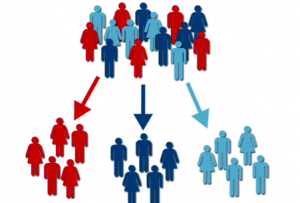Segmentation Of Customers Using RFM Analysis

Introduction :
In various chain of hypermarkets data has been generated in large and it has been generated on a daily basis across the stores. This extensive database of customers transactions needs to analyze for designing better supply. In this we are going to learn how customer segmentation is done using the parameters no.of days of gap that he takes, total number of products that he buys and the total amount the customer spends.
Customer segmentation is the process of grouping the customers as clusters based on their common characteristics. Below figure conveys the results after doing segmentation.

Importance of Customer Segmentation :
- Helps in finding potential customers.
- All the customers will not have same choices, opinions & importance.
- To improve quality of service, loyalty, retention.
- Customizing offers to improve marketing efficiency in an omnichannel environment.
- Providing management with a tool for measuring the performance of promotional offers (by type of offer, by segment, by channel, etc.)
- It provides opportunities for up-selling and cross-selling.
- It helps understanding the customers better and helps in improving the relationships with the customer.
- It helps companies to stay a step ahead of competitors.
Types of segmentation:
- Behavioral
- Demographical
- Psychological
- Geographical
Data Preparation & EDA for RFM Analysis
Data is collected from various sources and loaded to data warehouse using Pentaho Data Integration. The Pentaho Data Integration Tool performs the cleansing, transformation, applying rules and stores in staging data warehouse.
This data is further used for the exploratory data analysis, creating data pipeline and building model.
Customer segmentation using RFM analysis:
RFM (Recency,Frequency,Monetary) is a behaviour-based approach grouping customers into segments. It groups the customers on the basis of their previous purchase transactions. It gives better view of customers purchasing, spending and time gap of their purchases.

Theoretically we have segments like
- low value customers[less active + less frequent buyer]
- mid value customers[fairly frequent buyer].
- high value customers[highly active customer + revenue generator].
Use- Cases For RFM Analysis :
Industry | Roles |
Retail | In Retail customer segmentation plays the major role in launching of new products in the market. |
Telecom | In Telecom industry customer segmentation will involve in launching New bill plans,Promotional Features etc. |
| Banking & Financial | In Banking and financial customer segmentation will takes part in terms of Loans,Mutual Funds,Stocks and even for fraud detection. |
| Human Resource | In Human Resource customer segmentation will evolve in churning process and Pay-Roll process. |
Conclusion :
In this blog, we have covered details about Customer Segmentation. We have learnt what the customer segmentation is, Need of Customer Segmentation, Types of Segmentation, RFM Analysis.
